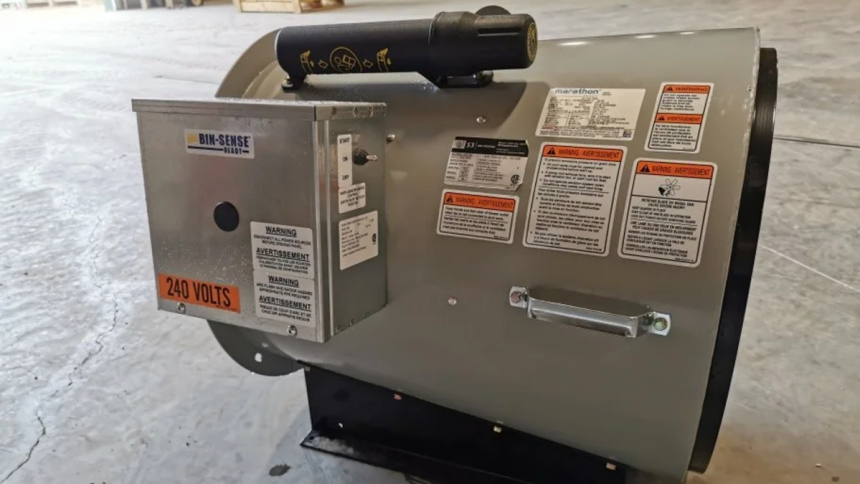In the world of agriculture, proper grain storage is crucial for maintaining the quality of the harvest. One essential component in this process is the grain bin aeration fan. These fans help manage the temperature and moisture content within the grain bin, preventing spoilage and ensuring the longevity of the stored grain. For farmers looking to maximize their yields and maintain the quality of their grain, understanding the best practices for using grain bin aeration fans is essential. Here are some tips every farmer should know.
Choosing the Right Aeration Fan
The first step in effective grain bin aeration is choosing the right fan. When selecting an aeration fan, it’s essential to consider the size of your grain bin, the type of grain you’re storing, and your local climate conditions. One reliable resource is to search the Avonlea grain bin aeration fan options, as the models they carry are known for their durability and efficiency. Their fans can help ensure even air distribution throughout the grain bin, preventing hotspots and maintaining a consistent temperature.
Proper Installation
Once you have the right fan, proper installation is crucial. Ensure the fan is correctly aligned and securely fastened to avoid any operational issues. It’s also important to check that the ductwork is properly sealed and free from obstructions. Any leaks or blockages in the ductwork can reduce the efficiency of the aeration system and lead to uneven airflow, which can result in spoiled grain.
Regular Maintenance
Regular maintenance of your grain bin aeration fan is another key factor in ensuring its efficiency. Before the harvest season, inspect the fan for any signs of wear or damage. Clean the fan blades and the motor to remove any dust or debris that may have accumulated. Regular maintenance not only extends the lifespan of the fan but also ensures that it operates at peak performance.
Monitoring Moisture Content and Temperature
Monitoring the moisture content and temperature of the grain is essential for effective aeration. Using temperature and moisture sensors, farmers can keep track of the conditions within the grain bin. This data helps in making informed decisions about when to run the aeration fan. Running the fan during the coolest part of the day, typically during the night or early morning, can help reduce the grain temperature more effectively.
Managing Airflow Rate
Another important aspect of grain bin aeration is managing the airflow rate. The goal is to achieve a uniform airflow throughout the entire grain mass. An airflow rate of 0.1 to 0.2 cubic feet per minute (CFM) per bushel is generally recommended for maintaining grain quality. Adjusting the fan speed and using multiple fans, if necessary, can help achieve the desired airflow rate.
Considering Seasonal Variations
Farmers should also be mindful of the seasonal variations in temperature and humidity. During the fall, when the air is cooler and drier, running the aeration fan can help cool the grain and reduce moisture levels. However, during periods of high humidity, it’s crucial to avoid running the fan as it can introduce excess moisture into the grain bin. Monitoring weather conditions and adjusting the aeration schedule accordingly is essential for maintaining the quality of the stored grain.
Understanding Different Grain Needs
In addition to managing temperature and moisture, farmers should also consider the type of grain being stored. Different grains have different optimal storage conditions. For example, corn and soybeans require lower moisture levels compared to wheat and barley. Understanding the specific needs of each type of grain and adjusting the aeration strategy accordingly can help prevent spoilage and maintain grain quality.
Importance of Record-Keeping
Finally, proper record-keeping is an often-overlooked aspect of grain bin aeration. Keeping detailed records of the temperature and moisture levels, fan operation times, and maintenance activities can help farmers identify trends and make data-driven decisions. This information can also be valuable in troubleshooting any issues that may arise with the aeration system.
In conclusion, effective grain bin aeration is a critical component of grain storage. By selecting the right fan, ensuring proper installation and maintenance, monitoring grain conditions, managing airflow rates, and keeping detailed records, farmers can protect their harvest and maintain the quality of their grain. With these tips in mind, farmers can maximize their yields and ensure the success of their operations.
Lynn Martelli is an editor at Readability. She received her MFA in Creative Writing from Antioch University and has worked as an editor for over 10 years. Lynn has edited a wide variety of books, including fiction, non-fiction, memoirs, and more. In her free time, Lynn enjoys reading, writing, and spending time with her family and friends.















